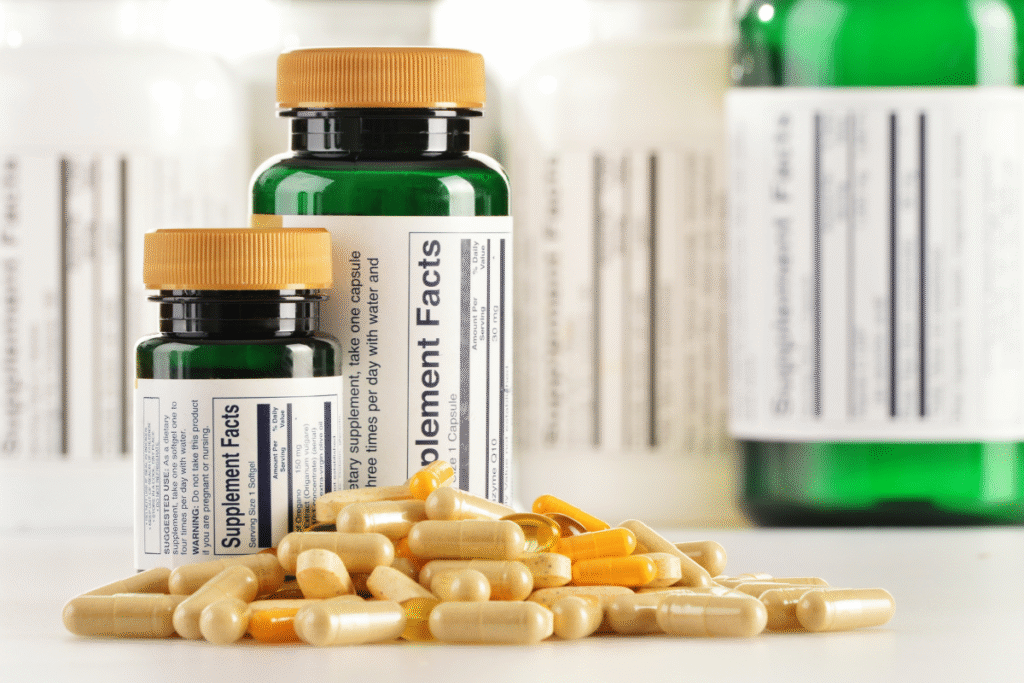Let’s be real: supplements can be a lifesaver. You’re low on energy? There’s a capsule for that. Trouble sleeping? Try this powdered mix. Want better skin, stronger nails, more focus? Boom—another bottle. But here’s the kicker—just because it comes in a clean-looking jar and promises all kinds of wonders doesn’t mean it’s good for you. Some supplements are hiding more than they’re helping.
I know, I recognize—it sounds dramatic. But the fact is, many humans have no clue they’re consuming harmful supplement ingredients each day.
So, let’s talk about what’s lurking behind the label.
Harmful Supplement Ingredients: The Fine Print Isn’t So Fine
Have you ever tried reading the back of a harmful supplement ingredients bottle? It’s like scanning through a chemistry test you didn’t study for. But buried in there are names that should totally raise some eyebrows. The problem? A lot of us trust the branding too much.
Companies love words like “natural,” “organic,” or “clinically tested.” But here’s the thing—those labels don’t always mean much in the harmful supplement ingredients world. Some of the most harmful supplement ingredients are hiding in plain sight.
Take artificial coloring, for example. Why does your energy booster need to look like neon Kool-Aid? It doesn’t. And sometimes those colorings have been linked to allergic reactions or even hyperactivity in kids. Sketchy, right?
Harmful Supplement Ingredients: Here’s a List of What to Watch Out For
Let’s break it down. These are some of the top harmful supplement ingredients you want to steer clear of:
- Ephedra: This one’s banned in many places for good reason. It messes with your heart.
- DMAA (1,3-dimethylamylamine): Common in weight loss dietary supplements but known to growth blood pressure.
- Artificial sweeteners: Things like aspartame and sucralose may mess with your intestine over the.
- Lead and heavy metals: Some imported or unregulated supplements sneak these in.
- Excessive caffeine: You’d be surprised how many “energy” pills load up on this. It’s not always obvious.
And honestly, that’s just scratching the surface.
But Wait, Aren’t Supplements Regulated?
Here’s where it gets dicey. Unlike medicines, dietary supplements in many countries (including the U.S.) aren’t strictly regulated before they hit the market. The FDA doesn’t test them like they do prescription drugs. They trust the manufacturers not to put poison in there.
So, unless a product causes a serious health event and people complain, it might go unnoticed that it’s packed with harmful supplement ingredients.
Let’s face it—we’re trusting companies to be honest, but not all of them are playing fair.
Personal Story Time: I Learned the Hard Way
A few years in the past, I jumped on the complement bandwagon. There was this modern-day combination that all people on Instagram were speaking approximately—meant to offer me glowing skin and unstoppable strength. I was sold.
But about two weeks in, I started getting the weirdest side effects. Insomnia. Crazy jitters. Constant nausea. Turns out the product was loaded with unregulated herbs and a bunch of ingredients to avoid in supplements, like high doses of caffeine and synthetic compounds I couldn’t even pronounce.
I tossed it, of course, and since then, I read every label like my life depends on it—because, sometimes, it kinda does.
Common Excuses People Make (And Why They’re Dangerous)
You’d be surprised how often people brush this off. Here are a few common things I hear:
- “If it’s on the shelf, it must be safe.”
Nope. Not always. Some harmful supplement ingredients slide under the radar for years. - “I’ve been taking it for months, and I feel fine.”
Keyword: feel. Some damage happens silently—like liver issues or hormone disruption. - “It’s all natural, though!”
Cyanide is natural, too, just sayin’. Natural doesn’t mean harmless.
Honestly, I get it—we all want a shortcut to better health. But we’ve gotta stop pretending the shortcut is always safe.
Health Risks of Supplement Ingredients: What to Look for Instead
Alright, enough of the scary stuff. Let’s focus on what you can do.
If you’re still going to use supplements (and I do!), just be picky. Here’s what I go for:
- Products with transparent labeling—every ingredient listed, nothing sketchy.
- Brands that have third-party testing (like USP or NSF certified).
- Supplements without dyes, fillers, or “proprietary blends” (aka mystery mixes).
- Options recommended by actual health professionals—not random influencers.
- Always keeping an eye out for health risks of harmful supplement ingredients by checking reviews and medical sources.
It’s not that hard once you get into the habit, I promise.
Harmful Supplement Ingredients: Why This Matters More Than You Think
Look, we all need to live healthier lives. But what’s the point if the very stuff we’re taking to sense better is silently messing us up?
Your liver, kidneys, or even your mind can be affected by long-term exposure to dangerous supplement ingredients, and, just like junk food, you may not even observe the damage right away.
Don’t wait until you’re handling the aftermath. Your frame merits higher.
Conclusion
If you take one aspect away from this ramble, allow it to be this—be intentional. Every time you pop a supplement, keep in mind: you’re deciding to believe what’s inside that capsule. So read the label. Google the ingredients. Ask questions. It’s your frame, and also you’re the only one dwelling in it.
For more such blogs, visit FeedFashion

